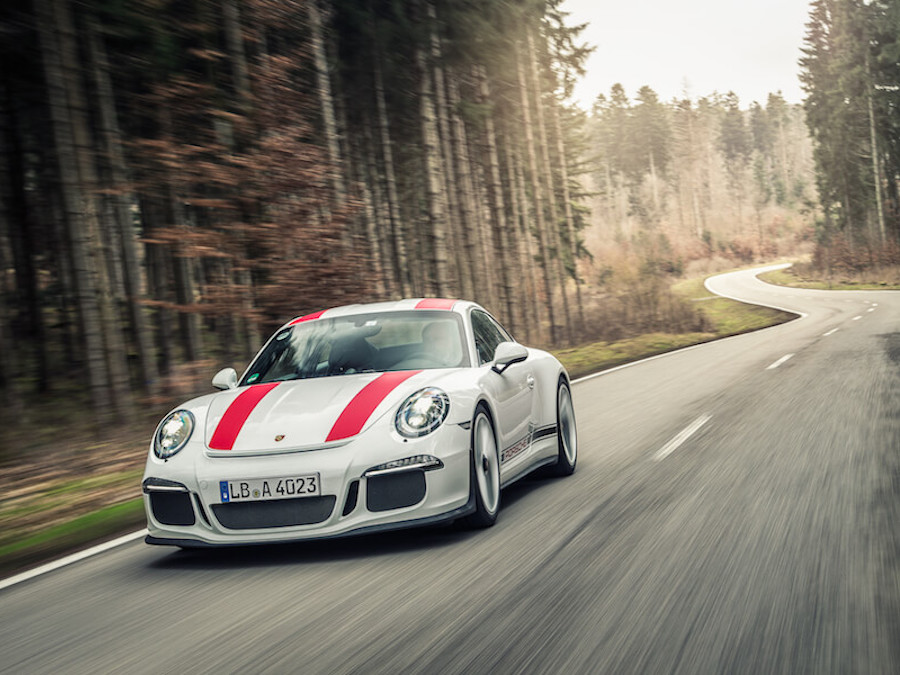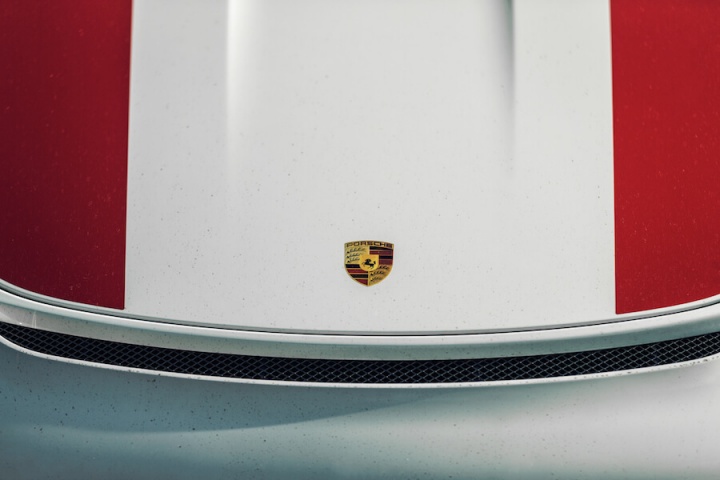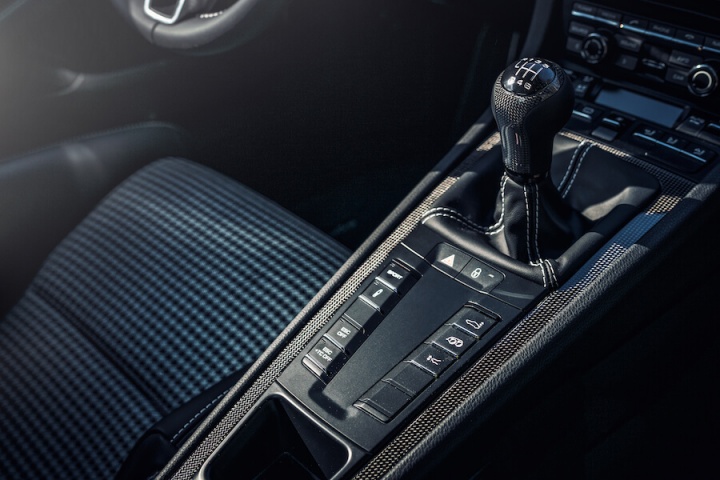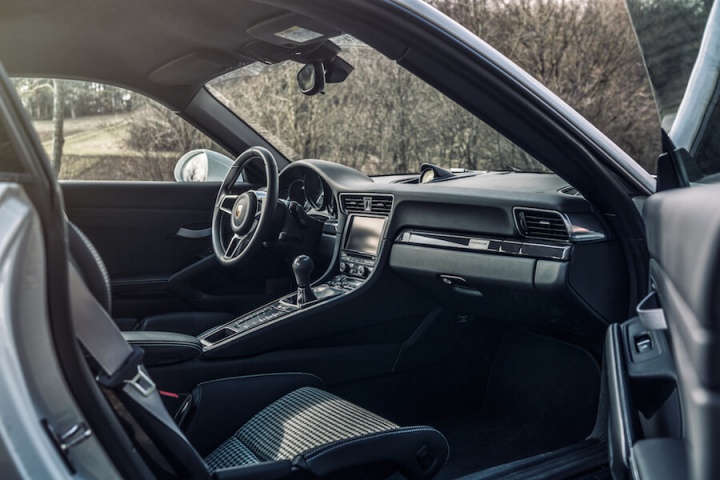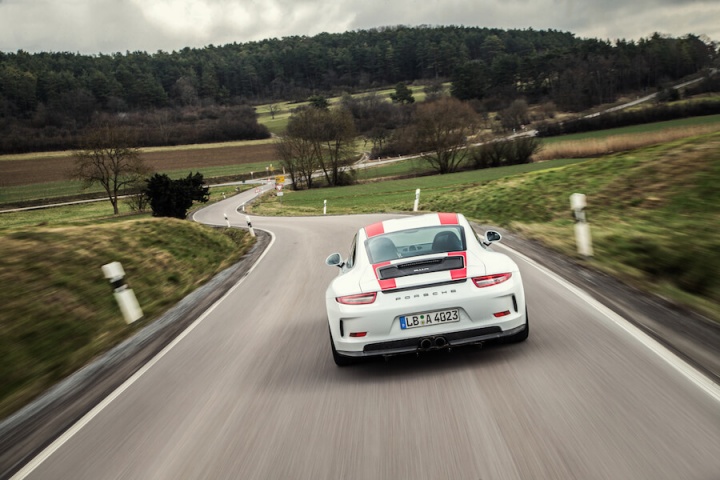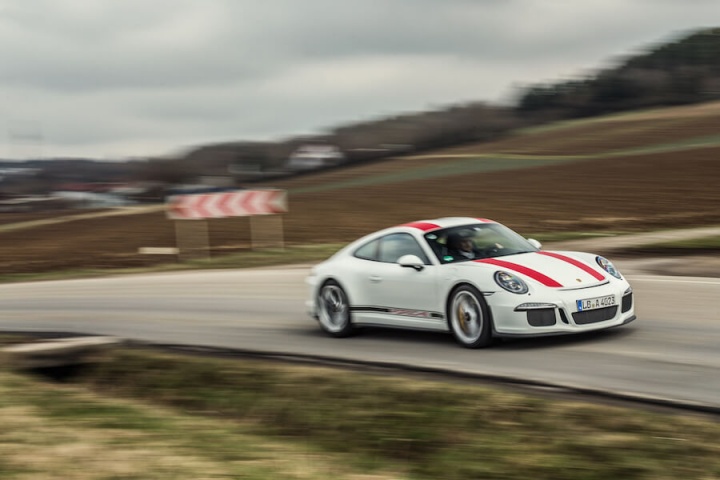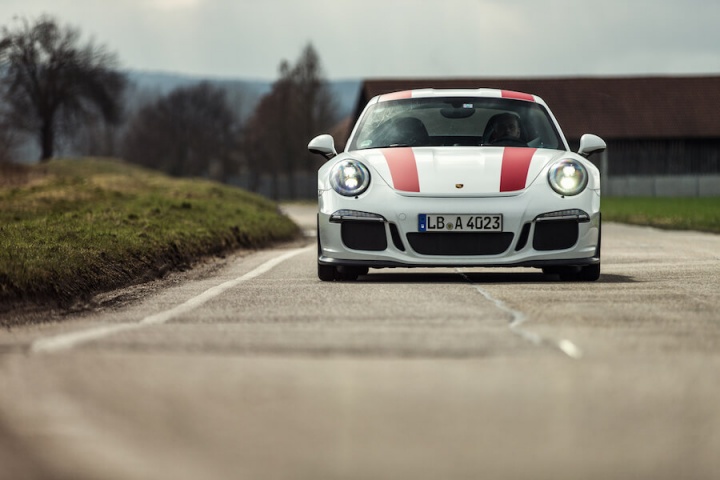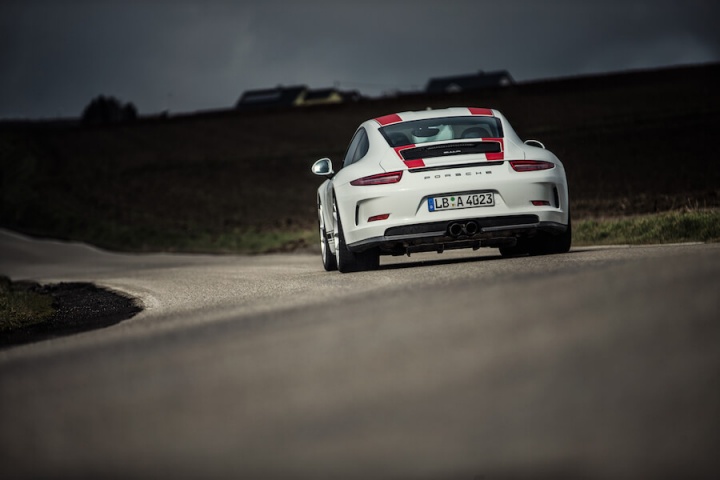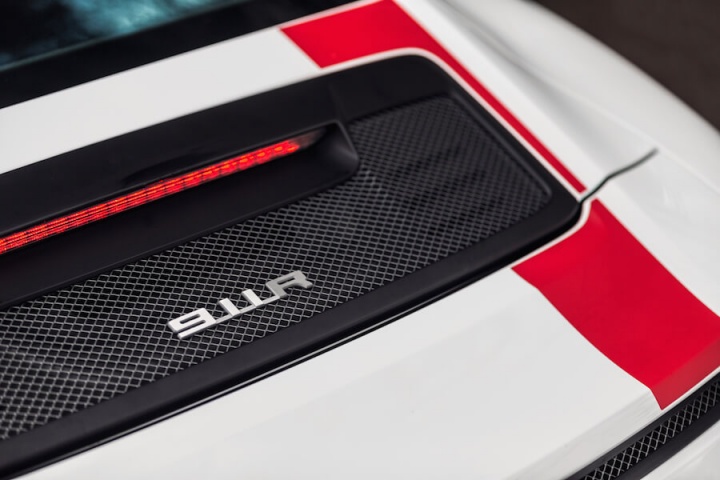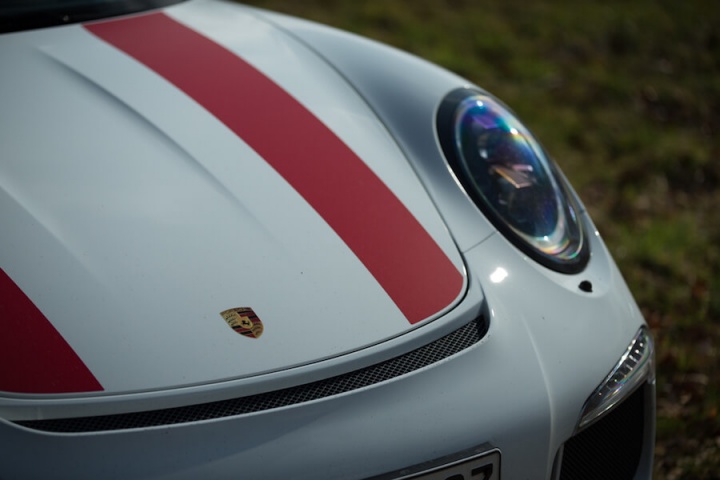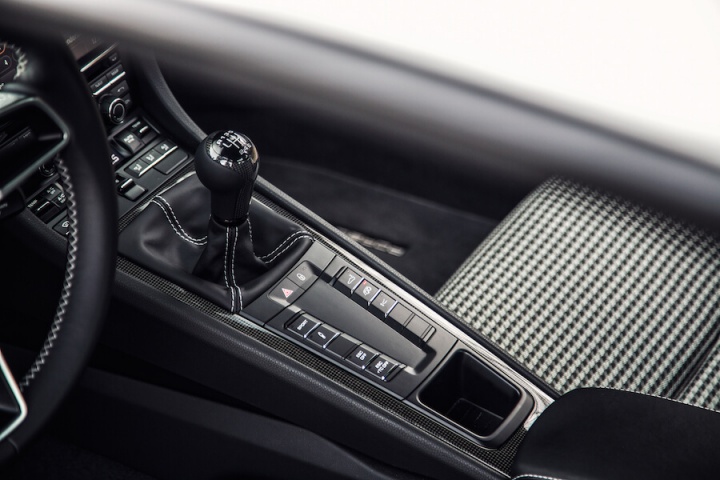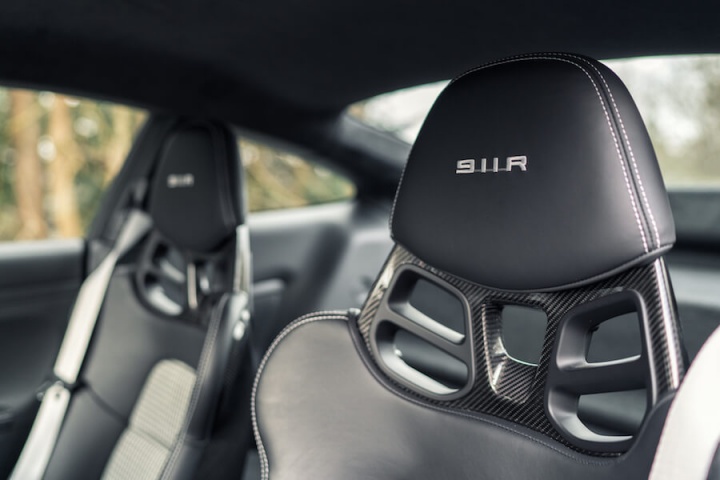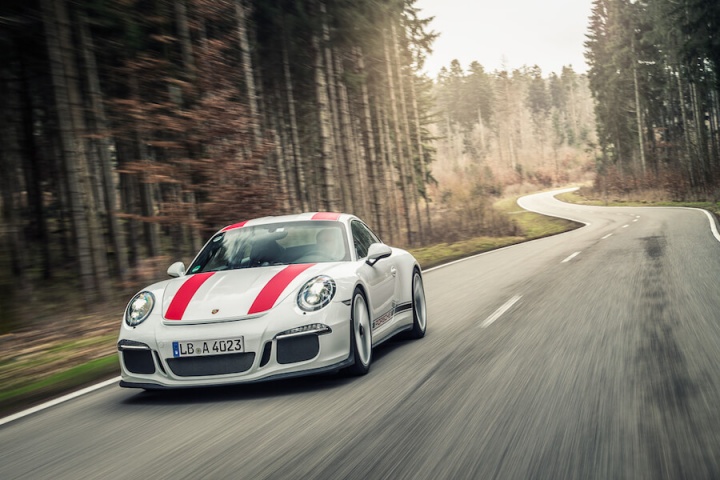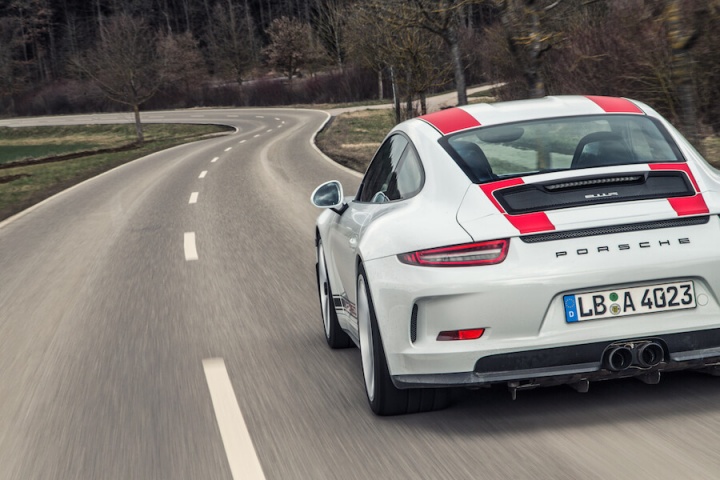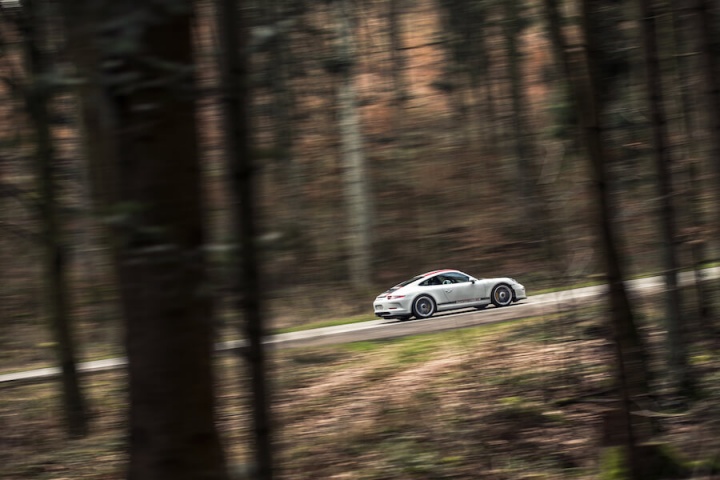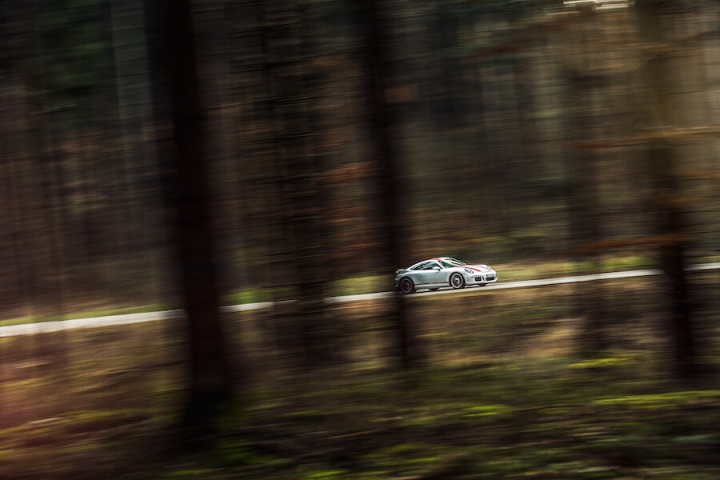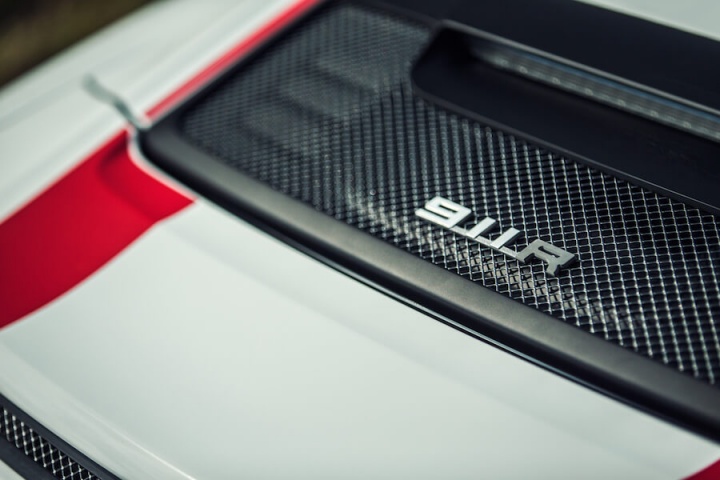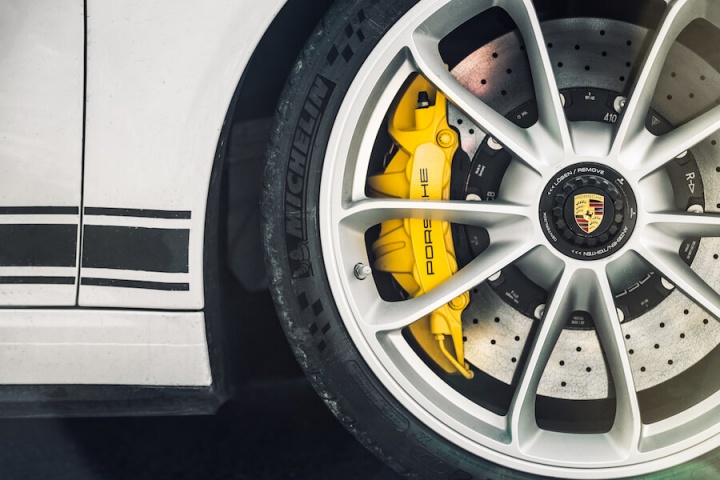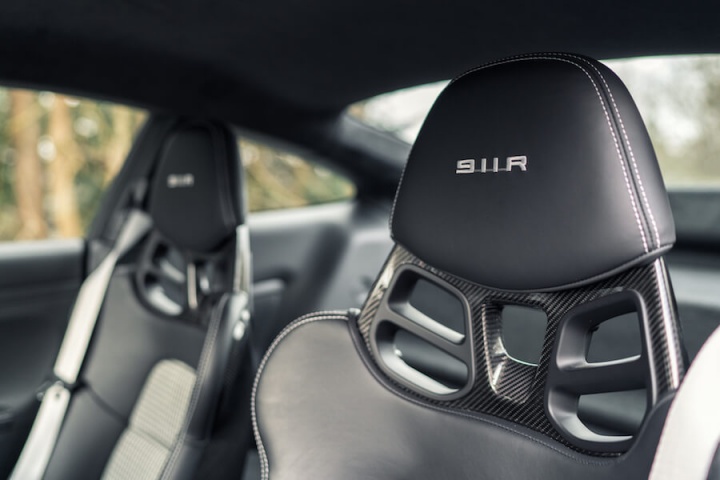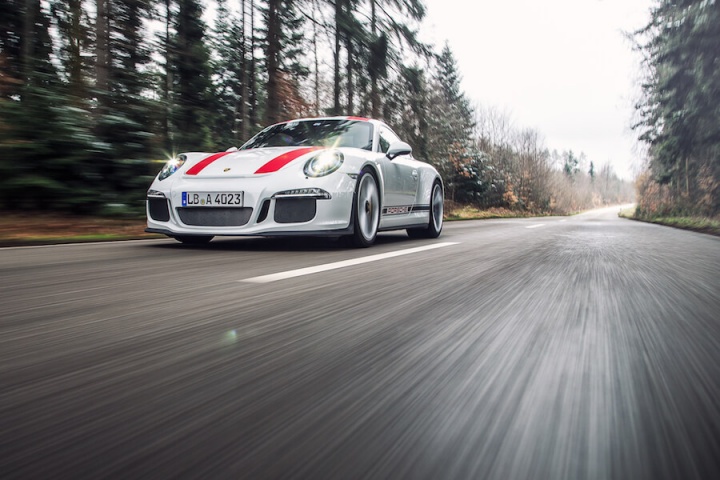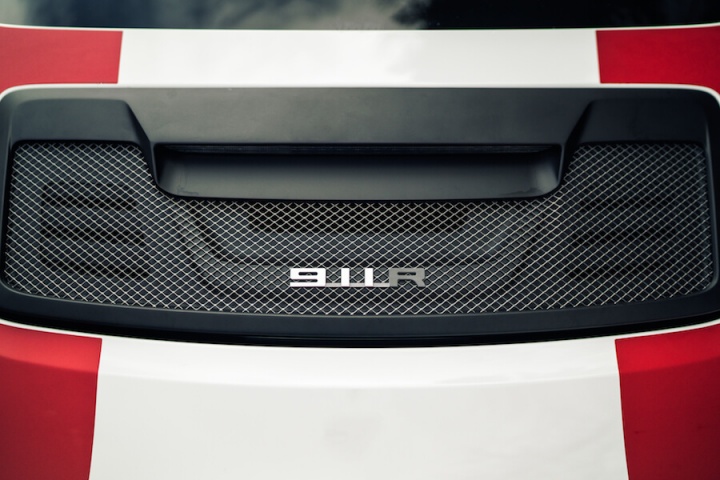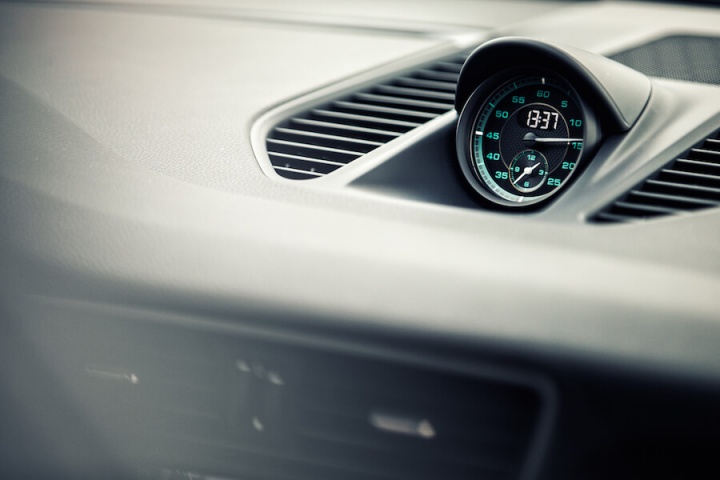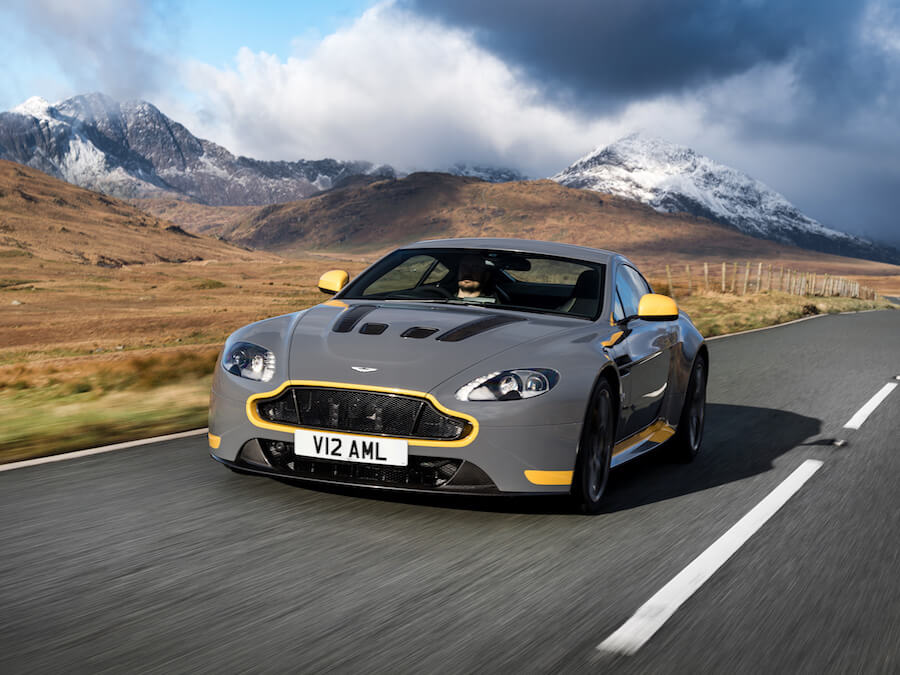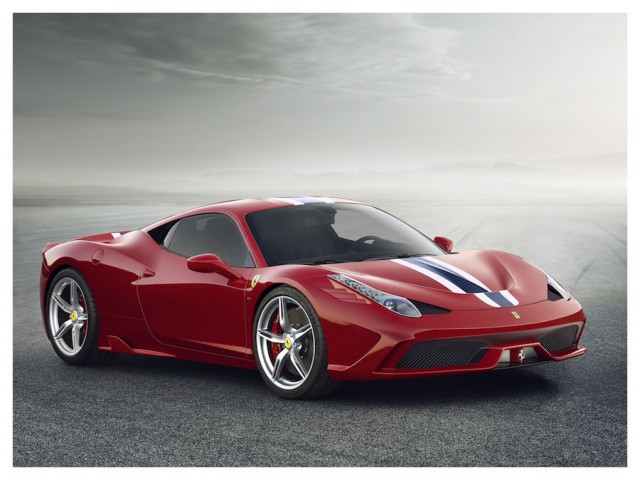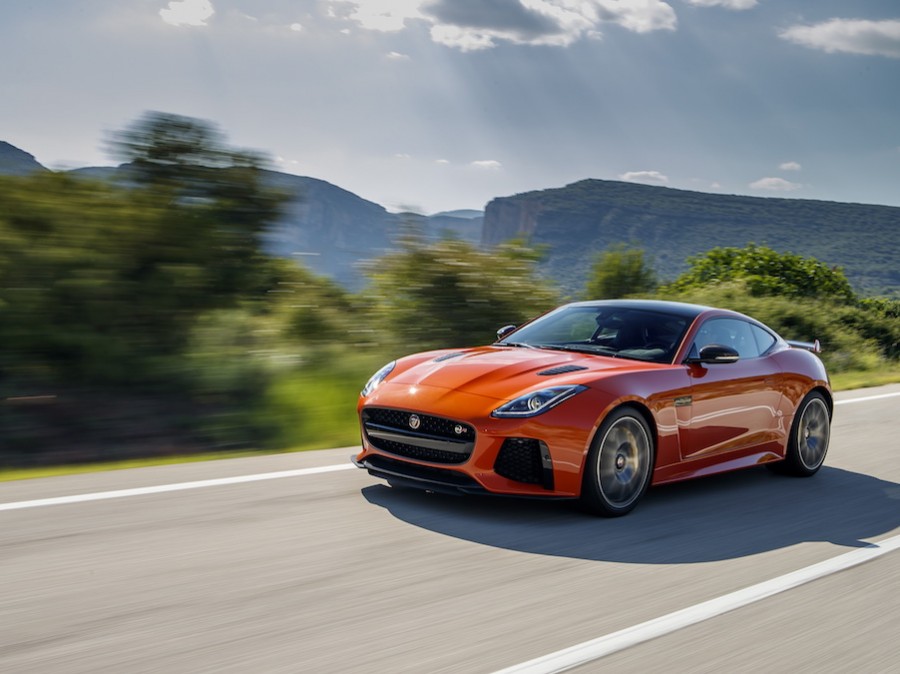In a digital world Porsche makes an analogue sports car in the new 911 R, answering the critics of the GT3 and GT3 RS's paddle-shifted gearbox strategy. That's the good news. That it's limited to just 991 examples worldwide (and they're all sold) is the bad.
In the metal
Visually, the Porsche 911 R presents something of a paradox, being both unadorned yet more crisply defined than a conventional Carrera. It was always the intention of Porsche's GT head, Andreas Preuninger, to deliver a car that was evocative of the pretty, original, lightweight 911 R that Porsche put to such good use in the late 1960s, but to achieve that it had to be unembellished, wearing none of the aerodynamic addenda that comes with most modern performance cars. Which is fine, until you realise that the 911 R is packing the same 4.0-litre 500hp flat-six engine as the 911 GT3 RS, which puts performance very much in the 'senior' league. To allow it to run at the speeds it's so easily capable of, safely, Porsche has had to be clever with its air management. Look under the back and you'll find a motorsport derived diffuser, while those front bumpers help manage the air better too, while also helping cool that engine and brakes.
The optional stripes (tick that box) hark back to that sixties racer, the R badge meaning exactly that, Racing, though here it's applied to a car that, in Preuninger's words, is very much a road car. The same elements have been applied though, taking parts of the GT3 (its narrow body) and adding GT3 RS bits into the mix (the magnesium roof, CFRP wings and bonnet, Perspex rear windows) while leaving the same stuff on the shelves as its two track-biased relations. So there are no seats in the back and there's even less sound deadening, while the front seats are 918 Spyder items, in carbon fibre. They weigh nothing, look fantastic and fit beautifully. The entire interior is neatly finished, with 911 R badging, hound's-tooth fabric in the centre of those seats and green illumination on the instruments. There's no air conditioning or stereo if you're obsessive about mass (don't be), but the over-riding, paradigm-shifting element in the cabin is the stick between the front seats and the third pedal at the driver's feet. The 911 R doesn't just hark back visually to its old-school relation, it does so physically too, featuring a bespoke six-speed manual gearbox and a clutch.
Driving it
We know that the 911 GT3 RS is fast, as is its GT3 relation, so it'll comes as little surprise that the lighter 911 R with the 500hp RS lump in it is very quick indeed. The manual gearbox slows down the proceedings a little bit if you're clock watching, 100km/h taking 3.8 seconds - or 0.5 seconds slower than its big-winged, PDK paddle shifted relation. The RS driver won't see which way the 911 R went on the Autobahn though, as its narrower body is slipperier, seeing it achieve a 323km/h quoted maximum - in comparison to the GT3 RS's 310km/h. Preuninger admits that the quoted maximum is very conservative, too.
It's all academic in reality, as the 911 R isn't about numbers associated with it; rather it's all about feel and interaction. The return of a manual transmission addresses what Preuninger himself admits is a loss of engagement from the fastest cars out there, saying the R offers something different to a purist audience. Old school, insomuch as it takes delicacy and some skill to extract the most from it, rather than just tugging another paddle and holding on as the world reverses. The six-speed manual uses the PDK's casing, though it contains completely bespoke internals. Apparently the GT department found the seven-speed manual offered elsewhere in the 911 range a bit too compromised in shift quality for this application. If developing a unique six-speed gearbox for the limited production 911 R sounds rather extravagant then you'd be right, as this transmission is almost certain to be offered on revised versions of the GT3 and its more hardcore RS sibling.
It singularly creates a more immersive and interesting driving experience, the mechanical interaction an absolute joy. The shift itself is very good rather than outstanding, the weighting fine, the speed good, though it lacks the overtly mechanical feel that its 997 GT3 RS predecessor offered. We're talking tiny nuances here, mind. The clutch is well-weighted and the bite clear, though the gearing itself is a touch too long to really enjoy that 8,500rpm redline with any frequency on the public road. There's incentive to do so, as the flat-six in the R sounds more obviously mechanical than in its GT3 RS installation, losing some of the breathy intake sounds for a more rousing note, complemented by the exotic sounding titanium exhaust that drops mass and adds glorious noise to the mix. Combined with the loss of more sound deadening and the lack of rear seats the engine's rich tones reverberate around the cabin. At idle, the mechanical chatter comes from the transmission, specifically the clutch release bearing, which rattles like a competition car's. It's evocative of the GT3 and its RS relations before PDK entered the equation.
Fitted with the optional single mass flywheel (a tick box that Preuninger insists that you choose to experience the 911 R properly), there's less rotational inertia in the drivetrain, to the benefit of the engine's ability to rev. With the manual transmission having hundreds of moving parts less than the PDK, the 911 R is able to offer an immediacy that's unusual in a modern performance car. Touch the accelerator and the engine reacts at once, as there is no slack in response. That's true of the steering too, which is among the very best electrically assisted set-ups we've encountered, its enthusiasm to turn in enhanced by the addition of rear-wheel steering into the dynamic make up. Preuninger admits that adding rear-wheel steering did cause him sleepless nights, as it arguably is against the purist ethos of the car, but the benefits it brings are obvious, not just in its steering response but also for improving the R's high-speed stability.
As a whole, the 911 R is refreshingly free of settings for the drivetrain. The Sport button only operates a rev-matching system, which works beautifully, but it's missing the point. The fun is to be had from doing so yourself, the transmission and the interaction it brings being exactly what the 911 R is about. The pedal spacing is good and it's easy to roll off the brake to blip the accelerator, making that Sport button entirely superfluous. There's a stiffer mode for the suspension, but the standard setting does such a fine job of controlling the R's lesser mass on the road, riding with a suppleness and clarity that's impressive given the suspension's necessary focus. There's movement within the chassis though, the R transitioning to slip more readily than its GT-badged relations and the more mobile rear is characteristic of older 911s. It aids and adds to the driving experience rather than dominating it or being detrimental to the experience, adding to the element of feel, the accessibility of the drive and the interaction and demands they put upon you, the driver. All that is combined with the ceaseless braking force and fine feel from the brakes, PCCB carbon ceramic brakes unerring in their retardation, their lesser mass also reducing unsprung weight to the benefit of the R's ability to offer such an accomplished ride. The R's a hugely, intoxicatingly accomplished driver's car.
What you get for your money
With just 991 being built and every single one sold, the R is a solid-gold investment. The few that are now for sale are around triple the list price. That list price looks like a bargain then, though to it you might want to add a few choice options, specifically that single mass flywheel, and have the radio and air conditioning put in while you're at it.
Summary
A technological backwards step might deny the 911 R of its ultimate performance, but the manual gearbox adds so much more to the experience. More than just a new transmission, it's the integration that's so significant, and impressive. Sacrificing nothing for a huge shot in driver appeal, that the 911 R signals a shift in perceptions as to performance car driving is significant to not just Porsche's line-up, but that of other firms too. All the talk today might be of self driving cars and autonomy, but at the other end of the scale, if you're passionate about being involved then Porsche has just built the perfect riposte. It's just a shame that so few will ever get to experience it.

